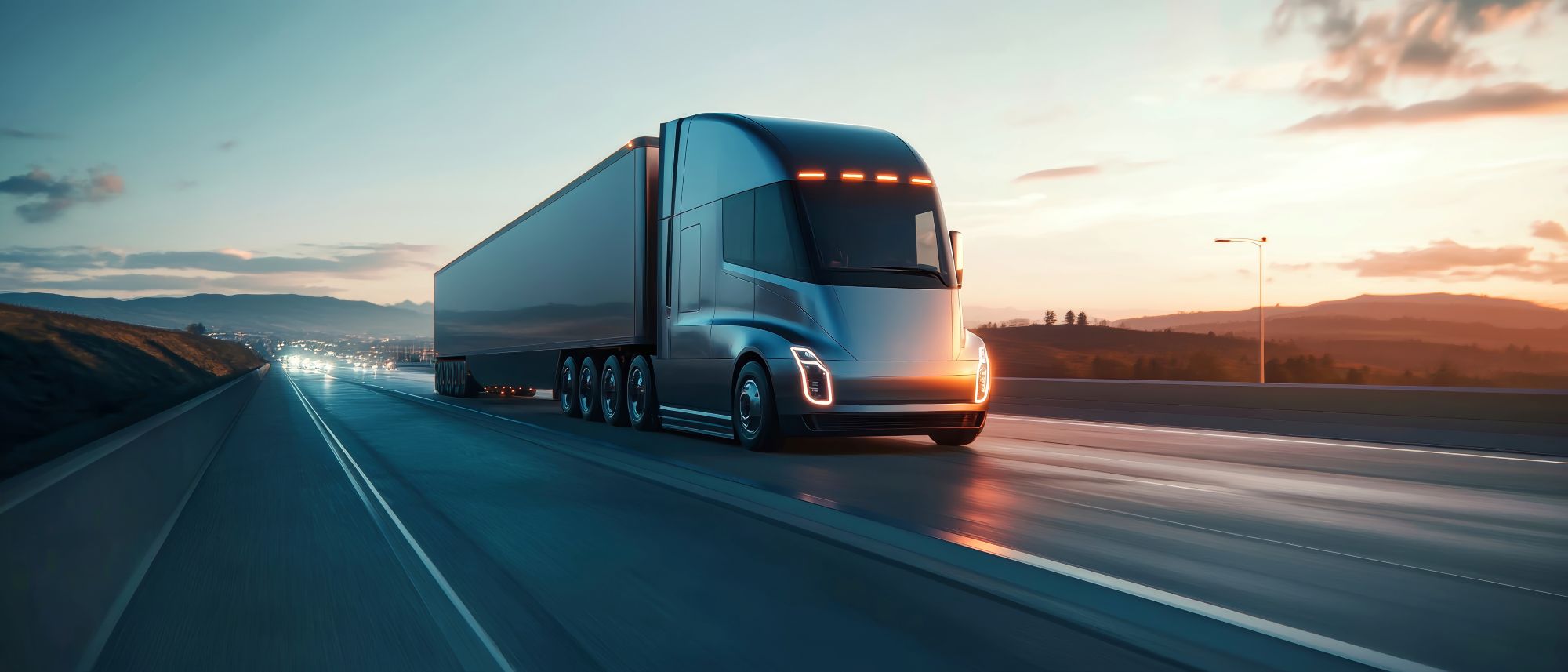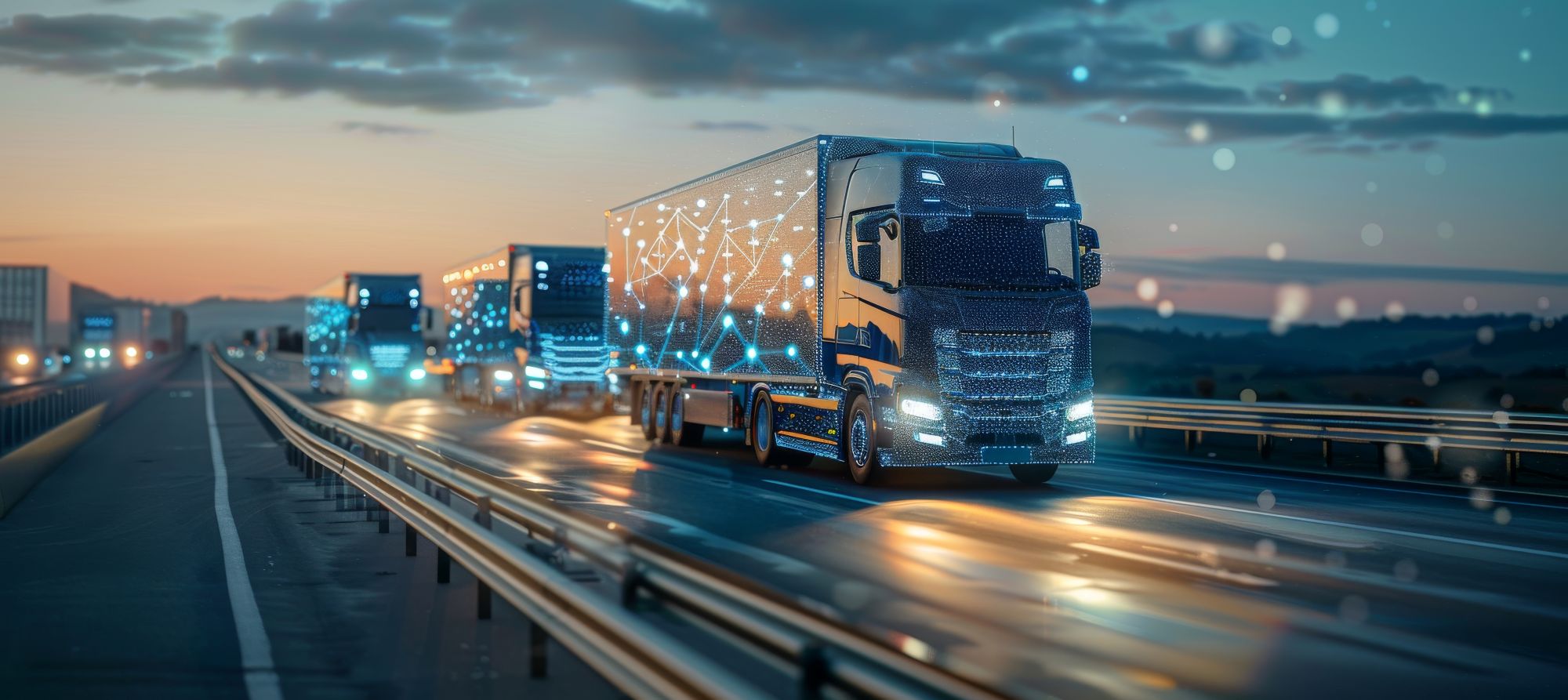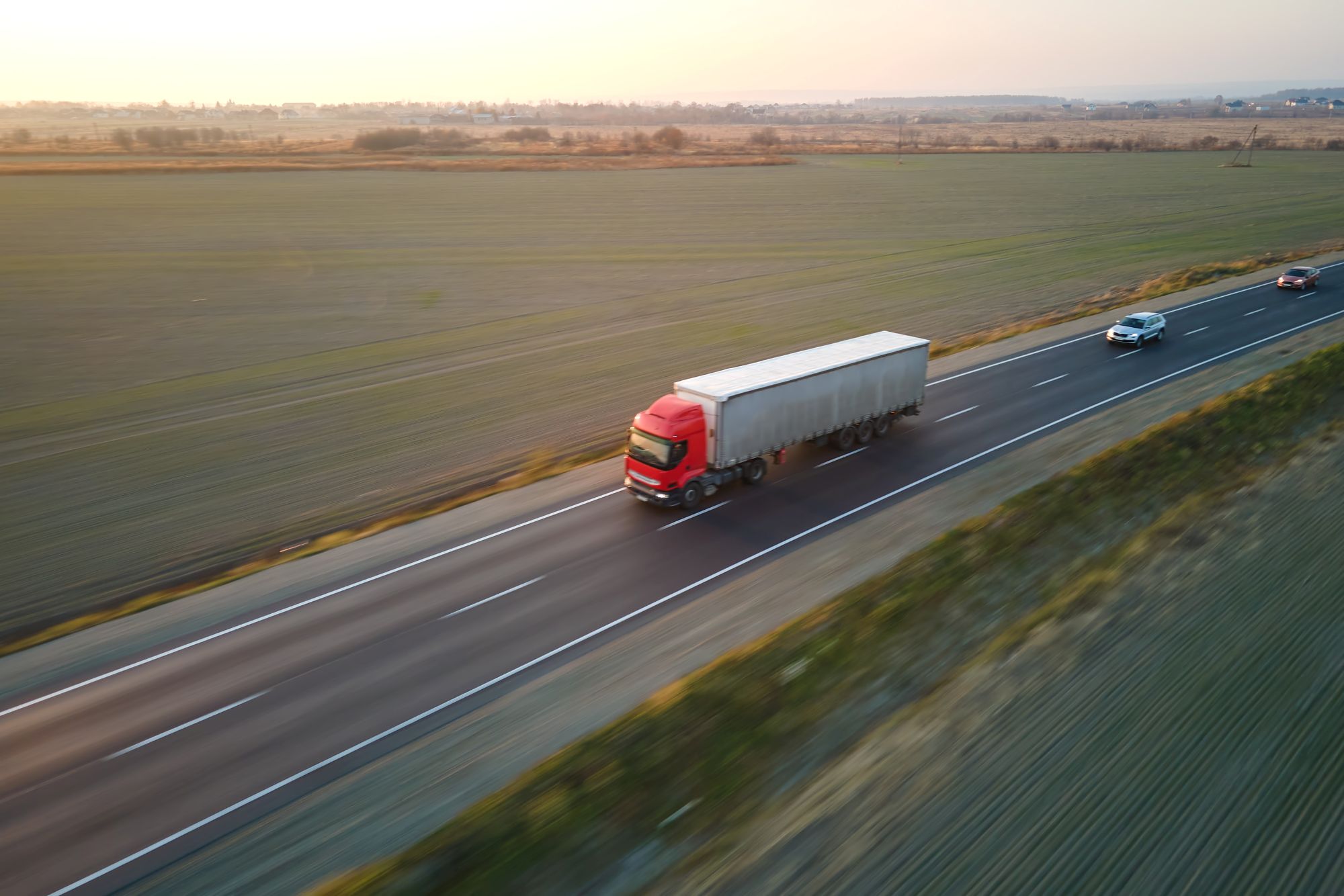
Guest
Ali se vozni parki preusmerjajo na integracijo avtonomnih vozil?
Ustvarjeno: 28. 08. 2025
•
Posodobljeno: 28. 08. 2025
Šum okoli samovozečih avtomobilov ni več tako glasen kot nekoč, vendar ostaja stalen šum v ušesih upravljavcev voznih parkov. Vlada Združenega kraljestva je pilotne načrte za integracijo avtonomnih vozil prestavila na leto 2026, s čimer je obnovila zanimanje za to tehnologijo. Ali bodo nosilci odločanja ignorirali hrup ali se bodo odločili za zgodnjo uvedbo?
Kaj vključuje integracija avtonomnih vozil?
Integracija avtonomnih vozil vključuje vgradnjo samovozečih tehnologij, kot so umetna inteligenca, zaznavanje svetlobe in daljinomer (LiDAR) ter kamere visoke ločljivosti, v komercialne vozne parke. Na širši ravni vključuje uvedbo samovozečih vozil v obstoječe sisteme javnega prevoza.
Sistemi za pomoč vozniku vključujejo preprečevanje trkov, samodejno prilagajanje hitrosti, usmerjanje na vozni pas, prilagodljiv tempomat in inteligentno vožnjo v službi. Delna in pogojna avtomatizacija uporabljata naprednejše tehnologije, ki v določenih okoliščinah omogočajo prostoročno upravljanje.
Avtomatizacija četrte in pete stopnje je za proizvajalce avtomobilov najpomembnejša prednostna naloga, vendar jo je v praksi težko izvajati, saj morajo inženirji upoštevati nešteto robnih primerov. Tudi z napredno umetno inteligenco je težko izpopolniti parkiranje in preprečiti trke. Kaj če so označbe na pločniku slabo vidne ali če na cesto steče otrok? Sprejetje je odvisno od odziva avtomobila.
Ali se vozne parke preusmerjajo na integracijo avtonomnih vozil?
Po podatkih Centra za povezana in avtonomna vozila je ministrica za promet Heidi Alexander potrdila, da bo britanska vlada pospešila komercialne pilotne načrte za samovozeča vozila in si prizadevala za pomlad 2026. S to potezo bi lahko ustvarili skoraj 40 000 delovnih mest in do leta 2035 britanskemu gospodarstvu dodali 42 milijard funtov.
Nova zakonodaja o avtomatiziranih vozilih v tej državi je med najbolj strogimi na svetu in predstavlja temelj za široko komercialno uporabo. Tehnološka zrelost je edina preostala ovira.
Sascha Meyer, izvršni direktor nemškega podjetja MOIA, ki se ukvarja z avtomobilsko tehnologijo, je v intervjuju za družbo McKinsey & Company povedal, da je napovedovanje časovnih okvirov vključevanja avtonomnih vozil izziv. Leta 2016 je njeno podjetje MOIA verjelo, da se bodo vozila brez voznika razširila po vsej Evropi do leta 2021.
Od takrat je Meyer ugotovil, da je za sprejetje treba oblikovati celoten ekosistem in ne le pogonskih funkcij. Po novem časovnem načrtu naj bi se samovozeči avtomobili v evropskih mestih pojavili najhitreje do leta 2030. Inženirji podjetja MOIA prototip oblikujejo tako, da presega predpisane presežke. Tako bodo pripravljeni na komercialno delovanje, ko bo sprejeta ustrezna zakonodaja.
Dejavniki, ki spodbujajo sprejetje vozil brez voznika
V voznih parkih za dostavo, taksije, komunalne storitve in komercialne vozne parke se pojavlja vse več sistemov za pomoč voznikom in inteligentne avtomatizacije. Vendar je stopnja razširjenosti še vedno razmeroma nizka, zlasti glede na to, kako dolgo že obstaja ta tehnologija. Kakšni so njihovi načrti za avtonomijo?
Večja učinkovitost je eden glavnih razlogov, zakaj upravljavci voznih parkov uporabljajo avtomatizacijo. V nasprotju z ljudmi lahko kombiji brez voznika delujejo 24 ur na dan. S telematskimi sistemi lahko optimizirajo vožnjo in zmanjšajo čas mirovanja ter tako izboljšajo učinkovitost porabe goriva in pospešijo potovanja.
Umetna inteligenca je imuna na človeške napake, zato ne omogoča ostrega zaviranja in nepozorne vožnje. Ne more se utruditi in nima mrtvih kotov. Te izboljšave bi lahko pripomogle k zmanjšanju števila trkov in prometnih nesreč, kar lahko omili drage odškodninske zahtevke delavcev in potencialno zniža stroške zavarovanja.
K temu prispevajo tudi prihranki pri stroških. Na ravni 4 in 5 lahko lastniki optimizirajo stroške dela in nadomestijo pomanjkanje voznikov. Poleg tega lahko električni avtomobili brez voznika z zmogljivostjo "vozilo-omrežje" v 30 letih zmanjšajo obratovalne stroške za skoraj 20 %, kar pomaga nadomestiti začetno naložbo.

Dejavniki, ki zavirajo sprejetje vozil brez voznika
Lastniki voznih parkov poleg čakanja na zrelost tehnologije brez voznika odlašajo z uvedbo tudi zaradi visokih začetnih stroškov. Vgradnja sistemov LiDAR, umetne inteligence in telematike v vsak tovornjak je draga. Enako drago je tudi nakup novih vozil namesto naknadne opreme. Tudi če bi bilo mogoče prihraniti stroške, se tehnologija hitro razvija - njihova naložba lahko hitro zastara.
Druga skrb je varnost. Senzorji s fotografskimi očmi so standardna oprema večine sodobnih garažnih vrat. Preprečujejo, da bi se vrata zaprla na predmete, avtomobile ali ljudi, in se uporabljajo v industriji v avtopralnicah in avtomobilskih montažnih linijah. Medtem ko nekateri proizvajalci avtomobilov uporabljajo samo sisteme s kamerami, so morali inženirji poiskati nove rešitve. Danes mnogi uporabljajo LiDAR, globalne satelitske navigacijske sisteme in ultrazvočne senzorje.
Vendar so tudi najbolj napredni sistemi zmotljivi. Ni dovolj, da avtomatizirani avtomobili delujejo enako dobro kot ljudje - uspeti morajo tam, kjer človeškim voznikom spodleti.
Senzorji obstajajo že leta, vendar jih inženirji še niso izpopolnili. V skrajnih primerih ali neznanih scenarijih lahko odpovedo. Avtomobili 3. stopnje delujejo le na vnaprej začrtanih, razdeljenih avtocestah v jasnem vremenu. Glede na to, da bo Združeno kraljestvo leta 2021 doživelo 150 dni s padavinami, so morda preveč nezanesljivi za sprejetje v velikem obsegu.
Kako se lahko Združeno kraljestvo pripravi na avtonomna vozila
Integracija avtonomnih vozil morda poteka počasi, vendar je na dobri poti, da v naslednjem desetletju doseže svoj cilj. Po raziskavah družbe Goldman Sachs bi lahko do leta 2030 do 10 % novih avtomobilov, prodanih po vsem svetu, predstavljala vozila tretje stopnje. Napoveduje, da se bo delež vozil 2. stopnje, ki zahtevajo nadzor voznika, povečal z 20 % prodaje leta 2025 na 30 % leta 2027.
Vodje morajo razmisliti o obsegu in stroških vključitve avtonomnega voznega parka, da ugotovijo, ali je zgodnja uvedba prava zanje. Verjetno bo prinesla dolgoročne prihranke, vendar se bo morda bolj splačalo počakati, saj bo tako na voljo čas za tehnološki napredek. Če analiza stroškov in koristi ni prepričljiva, naj razmislijo o postopni nadgradnji, ko avtomobili odpovedo.
Tisti, ki se odločijo za prevzem, morajo razviti politike delovanja, shranjevanja, varnosti in nadgradenj. Ta pravila morajo biti različna glede na stopnjo avtomatizacije. Na primer, od voznikov tovornjakov stopnje 3 je treba zahtevati, da so popolnoma pozorni na dogajanje na cesti in po potrebi prevzamejo nadzor.
Izobraževanje zaposlenih o njihovi vlogi je bistvenega pomena za uspešno izvajanje. Raziskava družbe Volkswagen Financial Services je pokazala, da šest od desetih ljudi meni, da so boljši vozniki kot avtonomna vozila, zato je malo verjetno, da bodo precenili zmogljivosti sistema brez voznika. Kljub temu bi morali biti deležni izrecnega usposabljanja o najboljših praksah in navadah, ki se jim je treba izogibati.
Prihodnost vključevanja avtonomnih voznih parkov v Združenem kraljestvu
V pristaniščih in skladiščih po vsej Evropi so na delu samovozeči stroji. Avtomatizacija vozil na avtocestah je večji izziv, saj ne vozijo po fiksnih tirih. Poleg tega morajo upoštevati spremenljivke, kot so vreme in drugi vozniki. Geofencing, telematika in umetna inteligenca pospešujejo sprejemanje, saj nepredvidljive stvari postajajo predvidljive. Te rešitve vsaj izboljšujejo odzivni čas in zmanjšujejo človeške napake ter dokazujejo, da so te prej nepreverjene tehnologije enako sposobne kot človeški vozniki.
Popolna avtomatizacija, ki odpravlja potrebo po človeški pozornosti, je za zdaj še teoretična. Vendar je vožnja brez uporabe rok realnost in sistemi brez voznika bi lahko kmalu postali standard v komercialnih voznih parkih. Medtem ko proizvajalci avtomobilov izpopolnjujejo vozne funkcije, morajo lastniki voznih parkov dati prednost kartiranju poti, upravljanju voznikov in načrtovanju vzdrževanja.

Odkrijte več iz Renovated Magazine.



